Bug Buddies has taken over our way of thinking this summer. Everyone in our household is taking notice of insects! I don’t think a day has gone by that I haven’t heard “Come here mom — I’ve found another bug buddy. What is it?”
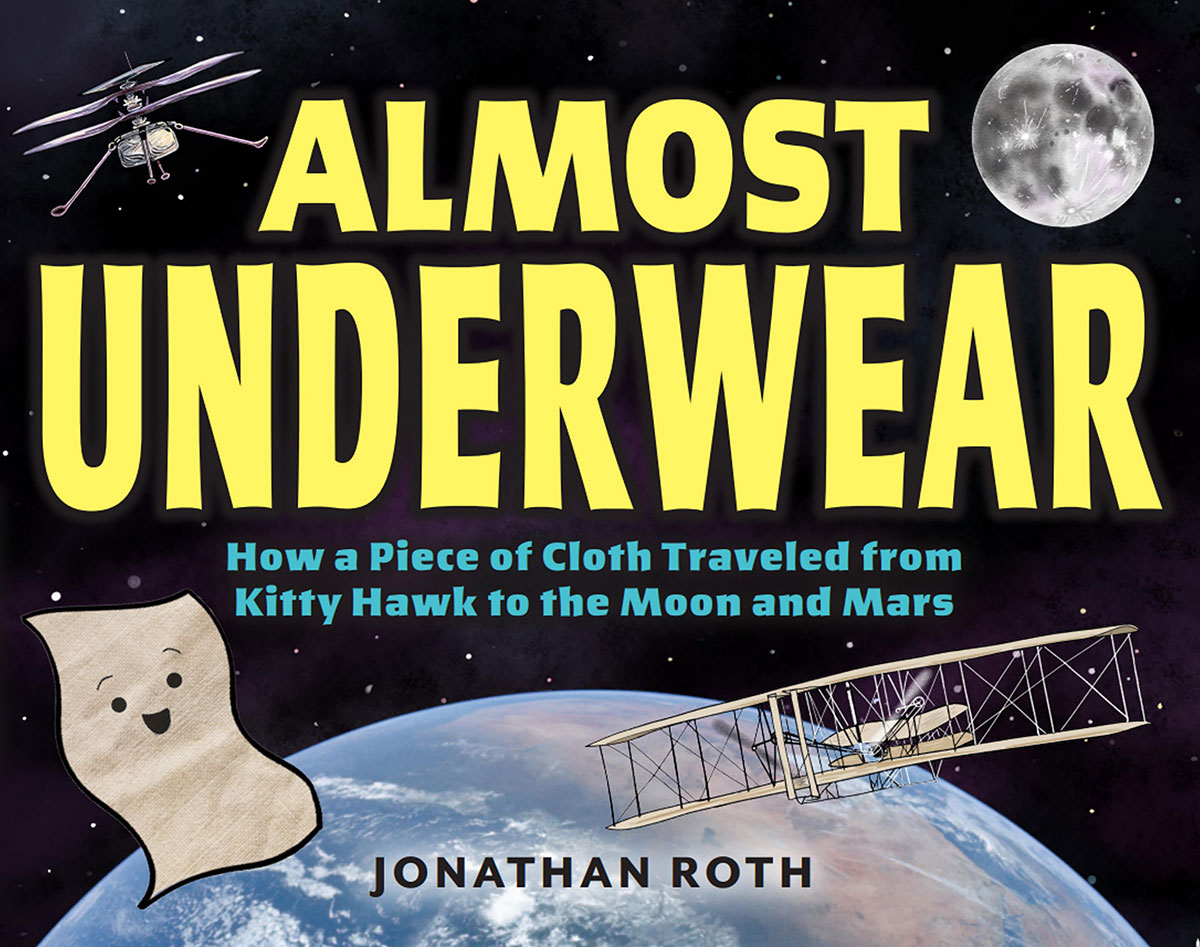 I find myself looking more closely everywhere at what is crawling or flying around, stopping on the sidewalk to watch a dragonfly, admiring a ladybug on the window screen, and even pausing on photos of insects when scrolling through social media. I’ve been trying — quite unsuccessfully — to get a decent photo of a bee in a flower this summer. So, when I saw the amazing shots on Instagram that Jonathan Roth was getting of bees on flowers, I had to ask him to share something about his summer photography obsession and his interest in insects.
I find myself looking more closely everywhere at what is crawling or flying around, stopping on the sidewalk to watch a dragonfly, admiring a ladybug on the window screen, and even pausing on photos of insects when scrolling through social media. I’ve been trying — quite unsuccessfully — to get a decent photo of a bee in a flower this summer. So, when I saw the amazing shots on Instagram that Jonathan Roth was getting of bees on flowers, I had to ask him to share something about his summer photography obsession and his interest in insects.
Jonathan Roth is an author-illustrator and public-school art teacher. His fun, STEAM-friendly books include the chapter book series Beep and Bob, the graphic novel series Rover and Speck, and the picture book Almost Underwear: How a Piece of Cloth Traveled from Kitty Hawk to the Moon and Mars.
We’re so pleased to have Jonathan here to bring insects and art together!
— Rachael Walker, Reading Rockets’ Book Life
Growing as an Artist by Jonathan Roth
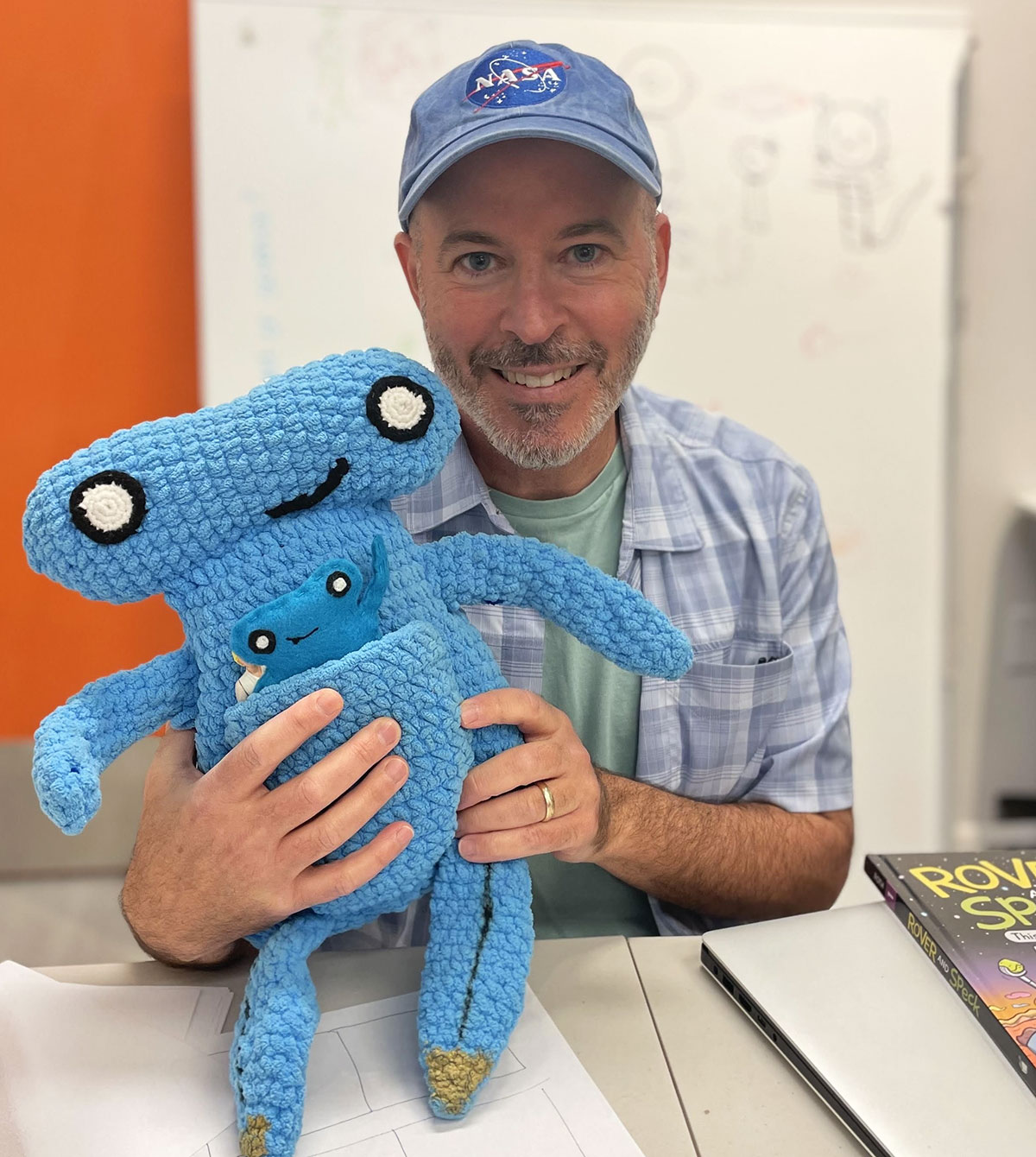 In 6th grade I was given an assignment to kill.
In 6th grade I was given an assignment to kill.
By a teacher. By a good teacher.
For context, this was back in early 80’s Michigan, just outside Detroit (think Freaks and Geeks). Things were different then. But still.
We were studying insects in science. The assignment, for homework, was to make a display. The display could showcase butterflies, beetles, bees and so on. We were supposed to find the specimens on our own. Maybe a dead one on the ground. If not, it was your job to do the deed. I don’t remember what techniques the teacher suggested. All I knew was that I did not want to do this.
Though I was generally a good student, I was also at that age where I was developing my own sense of ethical questioning. Was it wrong to kill bugs? Was it ok to question a teacher? Could I get a friend to kill for me? (A couple of my buddies would have readily volunteered!)
Or was there another solution?
Starting in elementary school, I was always a “class artist”. I loved to draw. Of course, I mostly focused on sketching superheroes then, but I also had a vague awareness that artists, for some baffling reason, sometimes wanted to do more than just comics. Could I do more too?
And that’s when it hit me: what if I drew my insect collection instead?
I think I floated this idea by my parents first (my mother is a painter, so this was an easy hurdle). But my teacher? Would she go for it?
If this was fiction, it would have been better for the teacher to say no, and then the student would have to rebel and the conflict would escalate. But in real life, my teacher was totally understanding and encouraging.
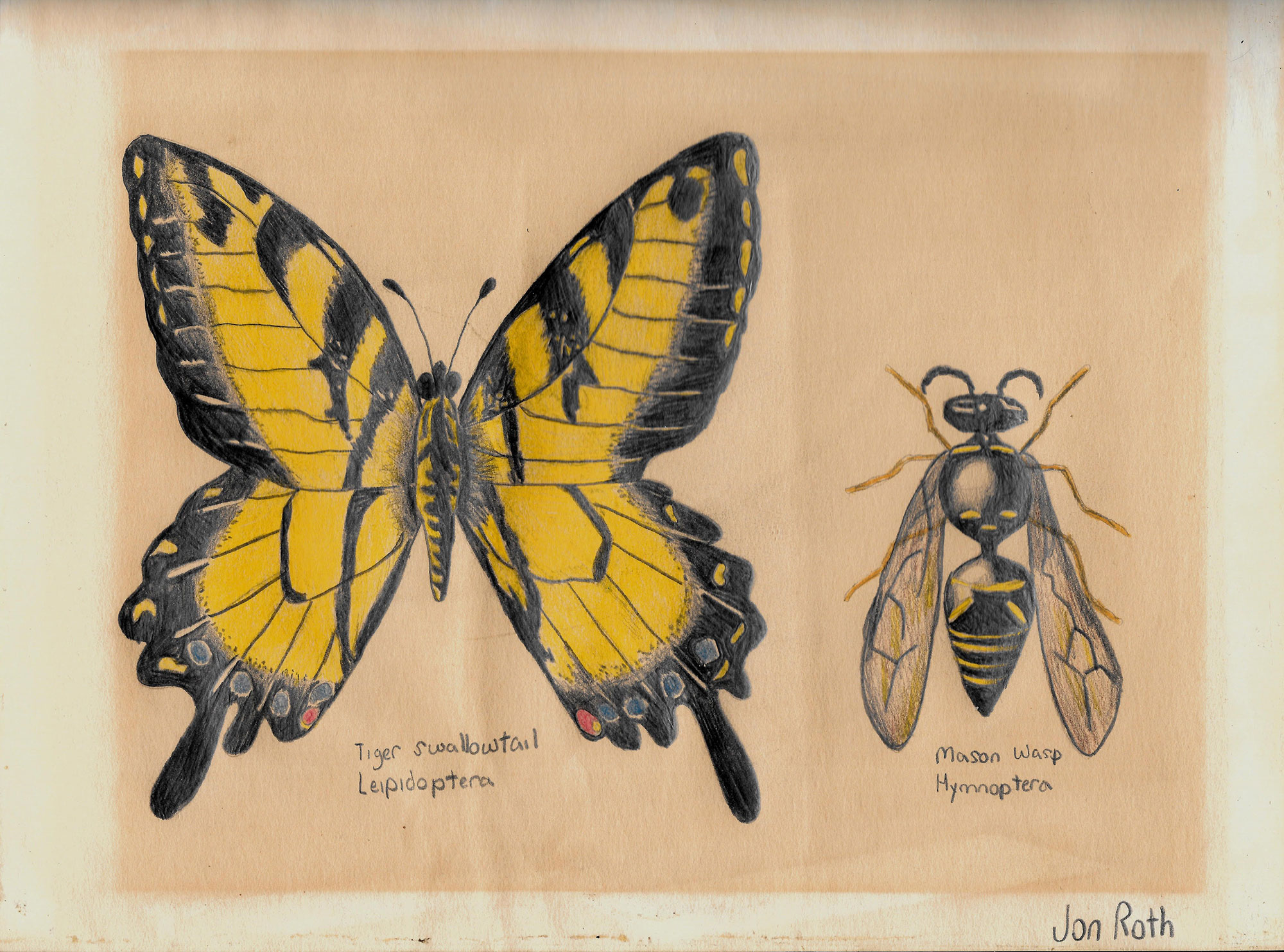 I then jumped into the project with gusto, looking through books for photos of insects and trying to replicate them as faithfully as I could. It was perhaps the first time I used highlights, such as the shine on a wasp’s body, to make something look realistic. Not much art survives from when I was young, but I’m grateful one drawing from this assignment now hangs on my mother’s apartment wall. Kids, save your work!
I then jumped into the project with gusto, looking through books for photos of insects and trying to replicate them as faithfully as I could. It was perhaps the first time I used highlights, such as the shine on a wasp’s body, to make something look realistic. Not much art survives from when I was young, but I’m grateful one drawing from this assignment now hangs on my mother’s apartment wall. Kids, save your work!
Though we were studying insects, the real lesson I learned is that teachers can be flexible and one can always find creative solutions to problems.
These days, drawing still plays a major role in my life. I write and illustrate books for kids (such as the graphic novel series Rover and Speck and the picture book Almost Underwear: How a Piece of Cloth Traveled from Kitty Hawk to the Moon and Mars), all with STEAM-friendly topics that I hope would make my 6th grade science teacher proud.
I also just completed my 25th year teaching elementary art in a public school system in Maryland, where I’ve gone full circle and now watch my own students create — and hopefully grow into — beautiful butterflies of their own.
For kids — of all ages — here are a few suggested activities:
Symmetry Painting
This is a fun way to experience symmetry using paint (I suggest watercolors, though tempera paint works too). First, fold a sheet of paper in half. Then load your brush with paint and make a squiggle or mark on one side of the paper. Quickly fold and rub. Then open. Instant symmetry!
Keep repeating the pattern — paint, fold, rub, open — until you have a butterfly, beetle or strange alien creature.

Draw from Nature
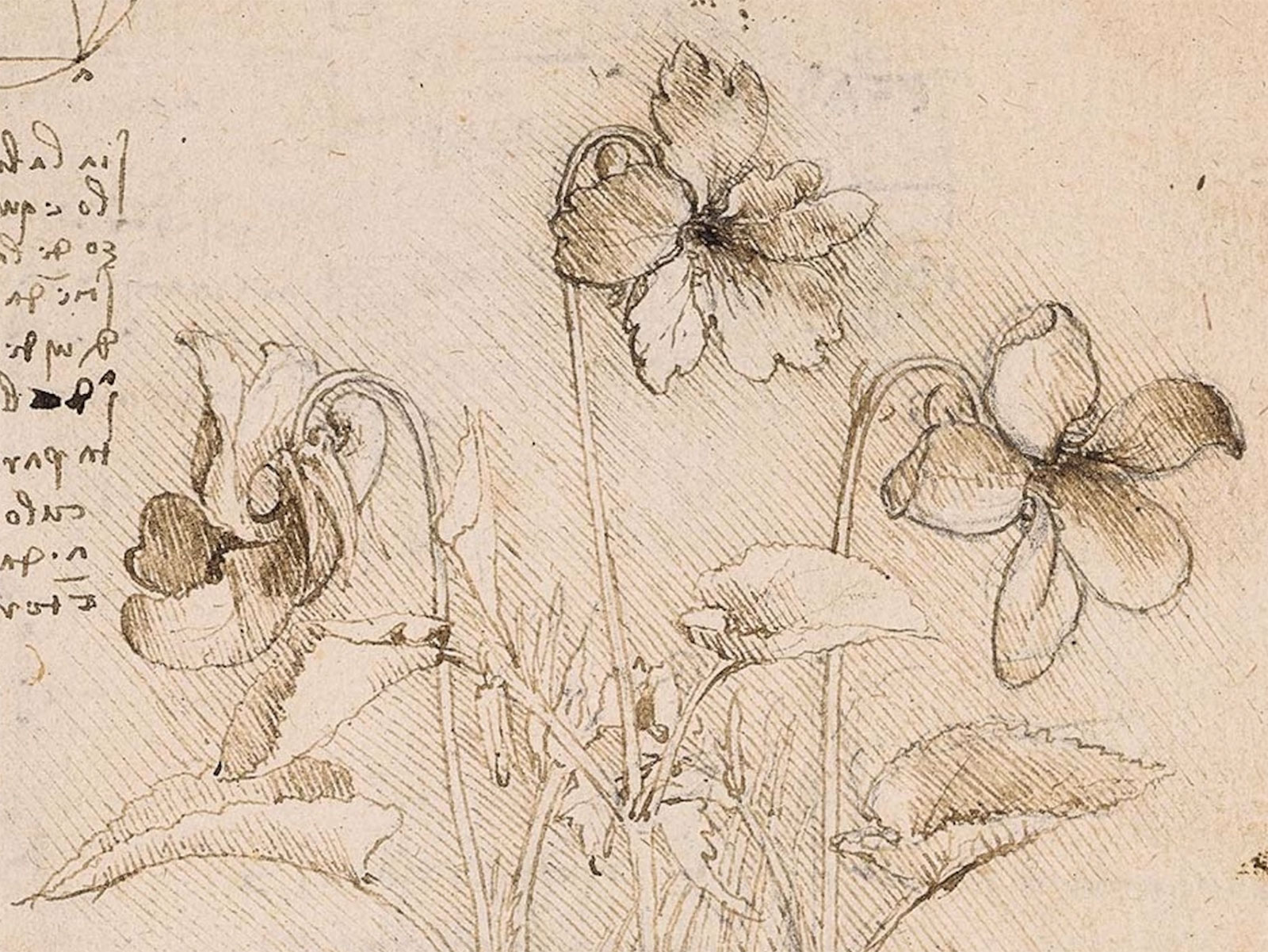 Leonardo da Vinci said, “Nature is the source of all true knowledge.” The thing that makes Leonardo so amazing as an artist isn’t that he drew so well but that he observed so well – and then, yes, so masterfully recorded what he saw.
Leonardo da Vinci said, “Nature is the source of all true knowledge.” The thing that makes Leonardo so amazing as an artist isn’t that he drew so well but that he observed so well – and then, yes, so masterfully recorded what he saw.
For my insect project, I drew from photographs. This is totally fine! But to really observe something in three dimensions, and to feel it and smell it, I advise going to the source.
Start simple: with a leaf, rock or flower. Observe it in different light, in different positions. Really look at the shapes and the details. When you start to draw, don’t worry about the finished result. What matters is what you notice. The more you draw from nature (or smell it or feel it) the more you will learn!
Photograph Plants and/or Animals
As much as I love to draw from nature, I equally enjoy taking photographs.
During the summer I’m particularly keen to capture bees and other insects on flowers. One tip for this is to learn how to focus your camera quickly (on my iPhone it involves tapping the screen where you want it to focus). Then be prepared to wait — and to snap lots of shots!
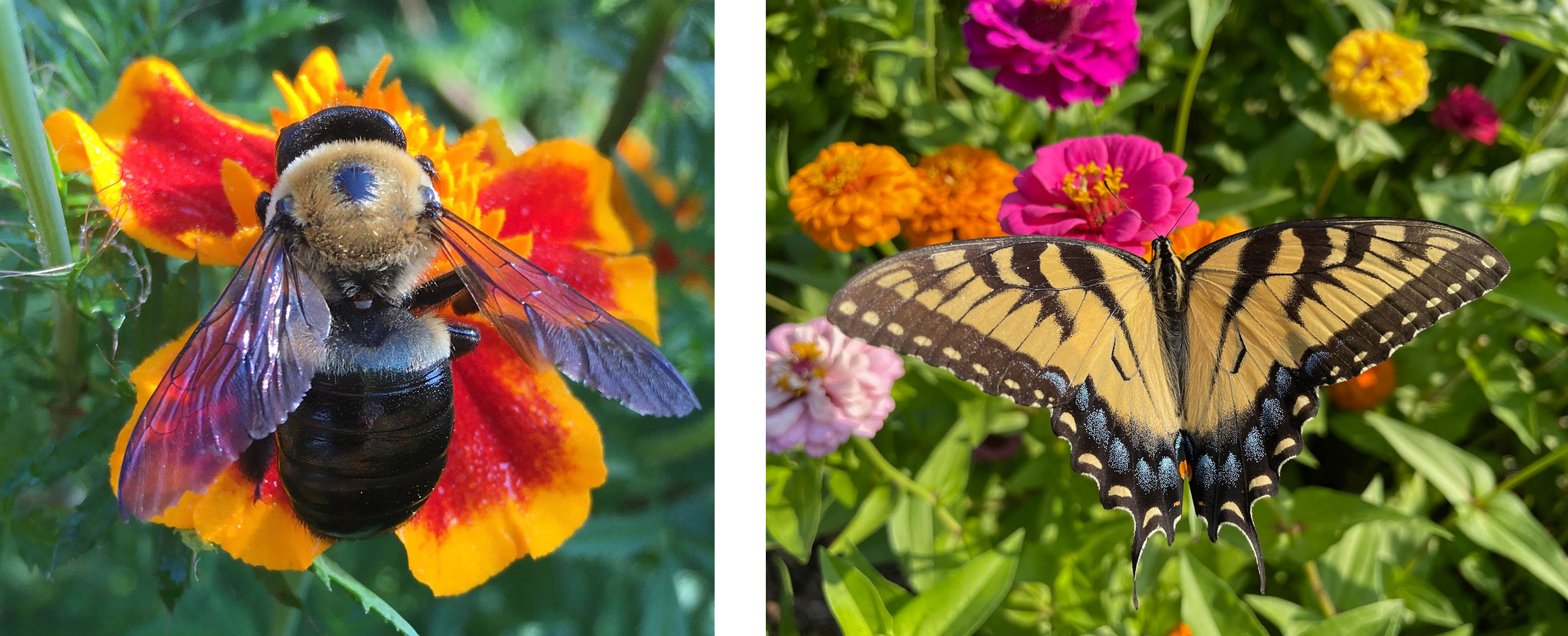
Insects, of course, are just one possible subject. When you’re in tune to nature you may find yourself fascinated by trees or clouds or squirrels or any combination of anything you see. Follow what moves you. Be patient. Be open. Most of all, have fun!



